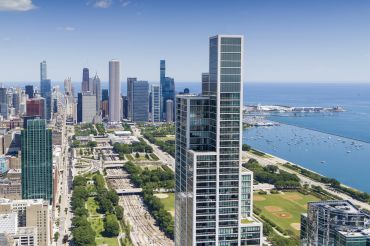Investment Sales Market Update (Things Aren’t Great)
By Robert Knakal September 28, 2016 12:22 pm
reprintsAs summer is over and the third quarter of 2016 draws to a close, I thought I would take the opportunity to present an update on the state of the investment sales market as well as present an overview of some key issues we will be watching for the balance of this year and well into 2017.
Conditions in the New York City investment sales market are indicative of a market in transition and one that began almost one year ago. The correction in the market began in late September, early October 2015. The signs that tipped this off were an almost overnight shift in sentiment that impacted the land and hotel markets.
Since then, prices have continued to rise but at a decelerating rate of increase and simultaneously there has been a slowdown in the volume of sales. The volume pullbacks have been both in the dollar volume as well as the number of properties sold.
Thus far in 2016, values in the outer boroughs have increased from an average of $332 per square foot last year to $375 this year, a 13 percent increase. In Manhattan, values appear to have increased 23 percent thus far this year over all of last, reaching an astounding $1,630 per square foot, outdistancing last year’s $1,330 average. However, if we eliminate two retail condo sales on Spring Street in Soho, which occurred at over $17,000 per square foot each, the average drops to $1,384, just a 4 percent increase over last year.
Capitalization rates more clearly demonstrate a market that is plateauing in terms of value. In the outer boroughs, cap rates have averaged 4.55 percent this year, down just 19 basis points from last year’s 4.74 percent average. This represents the smallest amount of cap rate compression going back to 2010. In Manhattan, the compression has been just 4 basis points, down to an average of 3.73 percent. This again reflects the smallest amount of cap rate compression seen since 2010 when prices hit their low point post resection.
With cap rates still compressing, and property values rising, you may ask how I can interpret this to mean that we are about one year into the transitioning, and correcting, market. If we look at what is happening with volume, it tells the story (property type performance also is a big indicator but more on that another time).
The dollar volume of sales is on pace for a total of $63.1 billion this year—an 18 percent drop from the record $77.1 billion last year. The number of properties sold is expected to reach 4,514, which if achieved, would reflect a 13 percent drop from last year’s total.
History has shown us that when a market is correcting, and property values start to feel downward pressure, the volume of sales drops as sellers are slow to capitulate and accept offers at a new reduced level. That is exactly what appears to be happening today.
Land and hotels are experiencing the most downward pressure on values while office buildings and multifamily assets remain the strongest sectors. Retail assets are somewhere in the middle but appear to be the next asset class that could face value headwinds.
Our concerns are that while the volume numbers are dropping thus far this year, they may, in fact, be overstated because many of the transactions that closed in 2016 had contracts signed in 2015 and may not be reflective of this year’s market realities. Time will tell as we head into the homestretch of what has been a very interesting year. As the year winds down and we head into 2017, we will be watching five key issues.
Fear and greed are two of the emotional motivators for market participants (herd mentality is the third) and fear has been becoming more pervasive over the last many months. Interest rates have been at historic lows for nearly eight years now. History and economics show us that long periods of low interest rates create asset bubbles.
When will rates rise, and when they do, how much will they rise? Underlying fundamentals are critical, and there appears to be downward pressure on rents across the board. Office, retail and residential rents must be monitored closely. Brexit has added to the dollar’s strength, which is a negative for tourism and, hence, the hospitality market. And, lastly, with the presidential election looming, both candidates have discussed tax reform with corporate rates and marginal rates being the focus. From a real estate perspective, capital gains rates, depreciation schedules and tax treatment of carried interests are critical. Regardless of who wins the election, if congress is divided, what will be traded for adopting the new president’s position on headline rates? This is probably the biggest risk for our markets moving forward. We should keep an eye on all of these issues.


